What are invasive species?
Invasive species are plants and animals found out of their native range that cause harm where they are found.
They are many non-native species, sometimes called aliens, that have the ability to spread through and overwhelm a native habitat. These species take over area and displace native flora and fauna. The ecological imbalance initiated by this invasion is dire and spreading quickly. We need to act now!
Invasive species are plants and animals found out of their native range that cause harm where they are found.
They are many non-native species, sometimes called aliens, that have the ability to spread through and overwhelm a native habitat. These species take over area and displace native flora and fauna. The ecological imbalance initiated by this invasion is dire and spreading quickly. We need to act now!
What is invasive management?
It is a process we can follow to focus on dealing with invasive species. The process becomes adaptive when you allow yourself to stop anywhere in that process and examine where you are to make sure you are realizing your goals. If not, you have to look and find out why.
The Process:
1. Inventory
- Start by gathering information. Know what you want to do and why.
2. Assessment
- Take a look at your new information. It will help guide and determine what, if any, issues should be addressed. Knowing the issues lets you plan and decide how to address them.
3. Control
- Does your assessment recommend control? Here is where you implement your strategy. Invasive management goals fall into the categories; Eradication, Elimination, Control, Suppression.
4. Restoration
- You can help the landscape repair itself by implementing restoration measures. Usually, restoration is implemented after control of the invasive species is confirmed. However, if the control plan takes several years then short term restoration techniques should be implemented. This is often suggested to maintain soil stability and water quality.
5. Monitor
- Congratulations! Your stewardship has protected your landscape's natural heritage and helped retain our region's natural heritage and biodiversity.
Now what is your reward? Diligent protection of your investment. While not very time consuming or cumbersome, it is very important to keep an eye on your landscape and watch for new invaders.
It is a process we can follow to focus on dealing with invasive species. The process becomes adaptive when you allow yourself to stop anywhere in that process and examine where you are to make sure you are realizing your goals. If not, you have to look and find out why.
The Process:
1. Inventory
- Start by gathering information. Know what you want to do and why.
2. Assessment
- Take a look at your new information. It will help guide and determine what, if any, issues should be addressed. Knowing the issues lets you plan and decide how to address them.
3. Control
- Does your assessment recommend control? Here is where you implement your strategy. Invasive management goals fall into the categories; Eradication, Elimination, Control, Suppression.
4. Restoration
- You can help the landscape repair itself by implementing restoration measures. Usually, restoration is implemented after control of the invasive species is confirmed. However, if the control plan takes several years then short term restoration techniques should be implemented. This is often suggested to maintain soil stability and water quality.
5. Monitor
- Congratulations! Your stewardship has protected your landscape's natural heritage and helped retain our region's natural heritage and biodiversity.
Now what is your reward? Diligent protection of your investment. While not very time consuming or cumbersome, it is very important to keep an eye on your landscape and watch for new invaders.
Links of interest:
|
Needless to say there is a lot of available information on invasive/alien species, here a a few links to get started.
New York State DEC lists many, but not all, of the invasive plants in our region. Cornell University Ecology and Management of Invasive Plants Program. The New York Invasive Species Clearinghouse. The Center for Invasive Species and Ecosystem Health -In this site there is a page with a comprehensive list with lots of information. |
Do you have a question about a particular species?
According to the NYIS; The Nature Conservancy (TNC) in New York and the Brooklyn Botanic Garden (BBG) developed a system and protocol designed to assess the invasive nature of non-native plant species. The New York State Invasive Species Council, in consultation with the Invasive Species Advisory Committee, adopted the ranking system for use statewide. On the NYIS website you may find a list of ranked species and when you scroll down you can select and review their invasiveness ranking forms. |
Invasive Plant Species
Below you can find a short list and pictures of some of the most problematic plants in our region.
Below you can find a short list and pictures of some of the most problematic plants in our region.
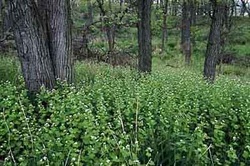
Garlic Mustard - Alliaria petiolata
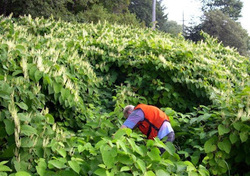
Japanese Knotweed - Polygonum cuspidatum
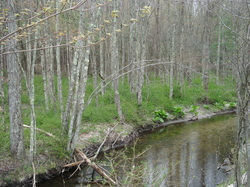
Japanese Barberry - Berberis thunbergii
and
Common Barberry - Berberis vulgaris
and
Common Barberry - Berberis vulgaris
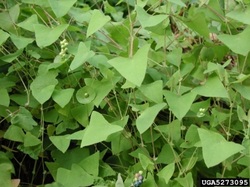
Mile-a-minute - Persicaria perfoliata
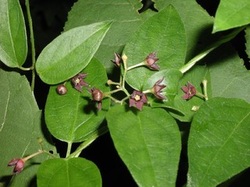
Black Swallow-wort Cynanchum louiseae
